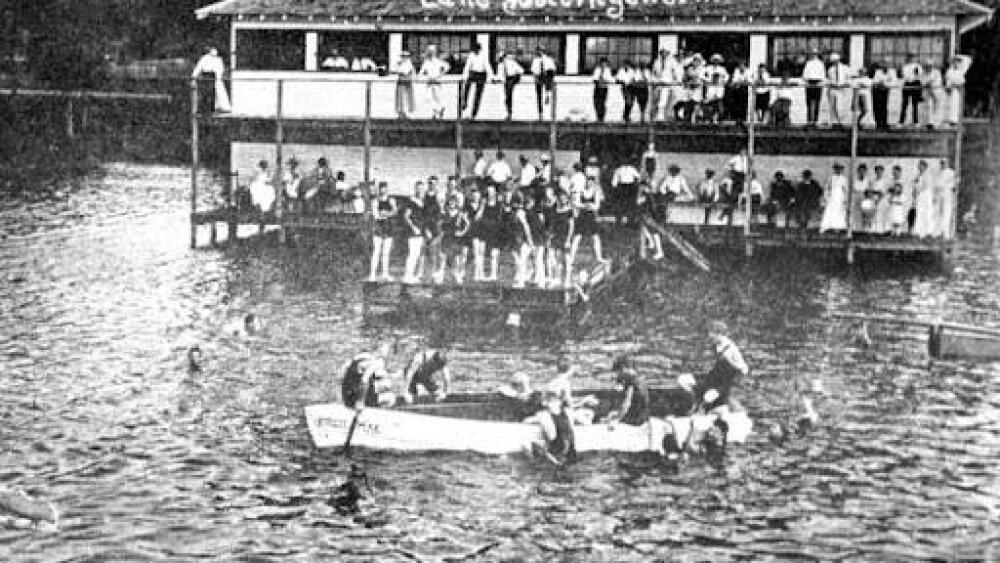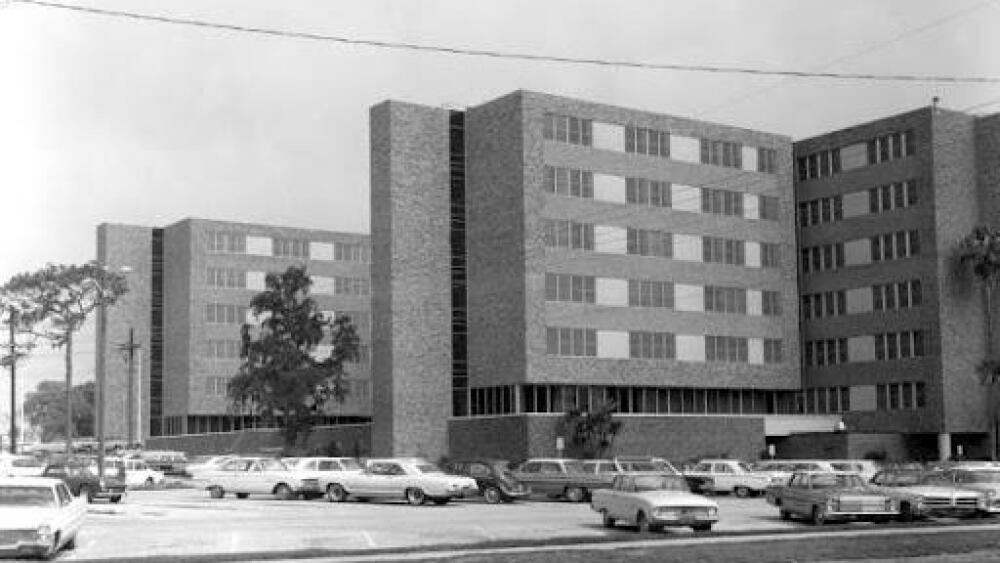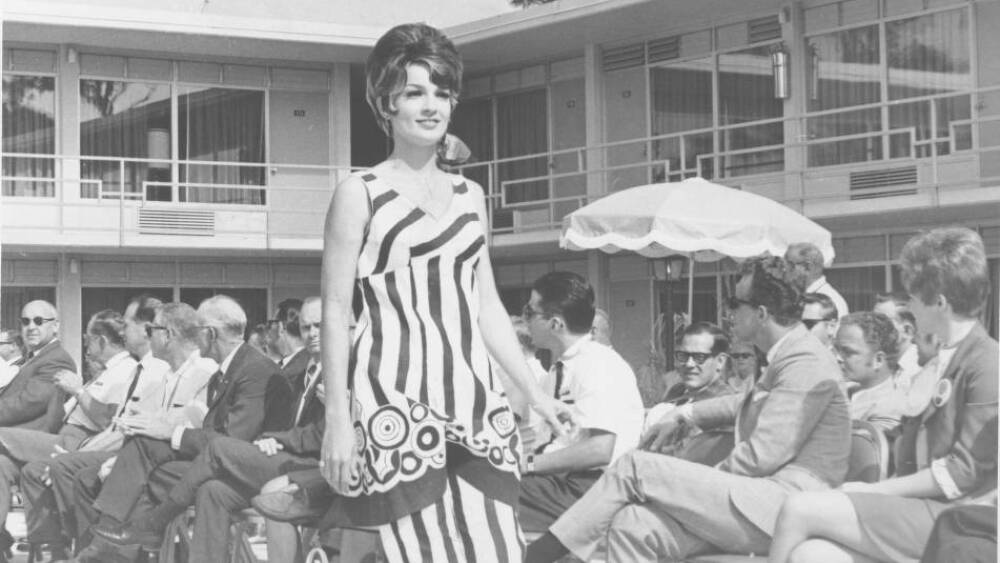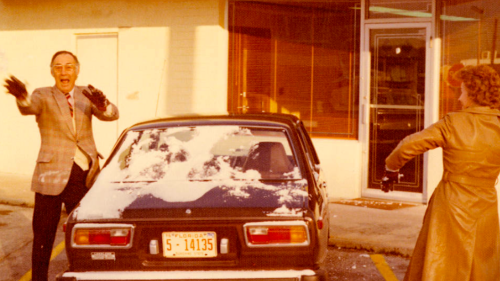18, 18, 1885. We might not be as musical as Bowling For Soup, but we share a similar passion for remembering the good ol’ days, throwing it all the way back to the Lakeland of yesteryear.
Keep reading for pivotal historic moments in Lakeland’s former eras.
1885-1900 | Lakeland’s incorporation, the railroad industry, and explosive growth
Lakeland’s founder, Abraham Munn, purchased 80 acres of land in 1882 that would one day become downtown Lakeland. Prior to incorporating Lakeland, Abraham moved from his birthplace of New Jersey to Louisville, Kentucky where he worked in the agricultural industry.
In 1884, Abraham’s persuaded officials at Henry Plant’s South Florida Railroad to make Lakeland a stop. At his own expense, Abraham provided a railroad station, amenities, and adjacent plots of land to the railroad in an effort to give Lakeland a permanent presence on central Florida’s map.
Lakeland rang in the new year by becoming an official town on Jan. 1, 1885. People flocked to the town that Abraham claimed was “beautifully laid out… and very desirable for a winter home.”
With the growing population came the development of The Tremont Hotel in 1885 (located on the corner of Massachusetts Avenue and Main Street) with an average of 25 trains passing through the subdivision daily.
Within 14 years of its birth, Lakeland had become Florida’s third largest city, behind Tampa and Jacksonville.
1900-1915 | Elections, hospitals, and modern hotels
The early 1900s were fraught with major developments, ranging from the first mayoral election in 1901 to the construction of Lakeland’s first fire department in 1908 and its first hospital beginning construction in 1915. The Federal Building, which served as Lakeland’s first stand-alone post office, was built in 1917.
As Lakeland grew, so did its taste for modern pleasures. Although the Tremont Hotel boasted Lakeland’s first bathtubs, Hotel Thelma was built just down the street (Frescos Southern Kitchen & Bar sits) on Nov. 10, 1913. Known as Lakeland’s first modern hotel, Hotel Thelma was a gathering place for cultural and civic organizations.
1915-1930 | Historic structures, Presidential visits, and Publix
From 1920-1925, Florida’s population increased by 30%. Known as the Florida land boom, this event led to the construction of some of Lakeland’s most iconic structures, including the Terrace Hotel (1924) and the Palace Theater (1925).
In 1926, The Marble Arcade (129 S. Kentucky Ave.), also known as Lakeland’s first “cloud scraper,” was constructed. The building is now owned by MidFlorida Credit Union, but back in the day, it was the only high-rise office building, designed to accommodate Lakeland’s growing industries.
Finally, in 1930, the first Publix supermarket, then named “The Publix Food Store” opened in Winter Haven, and Lakelanders got their first taste of shopping where it’s a pleasure.
Later that year, The New Florida Hotel (now the Lake Mirror Tower Apartments) was built. Months later, Lakeland’s first public library, the Park Trammell Building, was built on Lake Morton Drive in 1927. In 1929, President Calvin Coolidge became the second US President to visit Swan City.
1931-1945 | Beach pavilion closes, Publix expands, and WWII cadets take flight
Lakeland saw growth in smaller communities, tourism, and the need for air transportation in the early-mid 1930s. In 1937, the Lakeland Municipal Airport brought the first commercial airline service, as well as training grounds for WWII cadets, to what is now known as Tiger Town.
That same year, the Francis Beach Pavilion was torn down after 20+ years of entertaining residents on Lake Hollingsworth’s shores.

The Francis Beach Pavilion on Lake Hollingsworth offered boating, dancing, and swimming | Photo via Florida Memory
In 1945, George Jenkins purchased the Lakeland Grocery Company, Lakeland’s primary grocery provider, and Lakeland was dubbed the headquarters for Publix supermarkets.
That same year also brought the closure of The Lodwick School of Aeronautics, which had made significant contributions to the war effort during WWII. The air station was renovated to be the new spring training clubhouse for the Detroit Tigers.
1946-1960 | Silvermoon Drive-In opens, Elvis performs, and royal swans arrive
Construction began on the Charles Larsen Power Plant in 1947, which started operating in 1950.
One of Lakeland’s most iconic structures arrived in 1948 when the Silvermoon Drive-In Theatre opened. Fun fact: tickets were 35 cents per person.
In 1950, Publix opened a 125,000-sqft warehouse and office complex. The building was lauded as the most modern structure of its kind nationwide, due to its art deco-inspired design and hyper-efficient warehouse space.
The years 1956 and 1957 were for the books. As most Lakelanders know, that’s when Elvis performed at Polk Theatre and Queen Elizabeth sent royal swans to Lake Morton, respectively.
Lakeland closed out the ‘50s with a modernized hospital. Formerly known as Morrell Memorial Hospital, the structure was replaced with a new facility and given a new name — Lakeland General Hospital.

Lakeland General Hospital circa 1967 | Photo via Florida Memory
1961-1969 | Nathan’s Men’s Store, Southside Cleaners, and the Florida Retirement Residence Hotel
Nathan’s Men’s Store made the corner of Main Street and Kentucky Avenue its home in 1961 after nearly 20 years in business. It would operate there until its 2020 closure, after nearly 80 years of serving “dads and lads.” Now, the site is home to Wauchula State Bank and Banquet61.
The Southgate sign isn’t the only landmark on South Florida Avenue. The Southside Cleaner’s sign, known for its witty sayings and inspiring quotes, went up at the intersection of Florida Avenue + Cresap Street in 1962 after the Myers family opened their dry cleaning operation. Marge Myers, the family matriarch, penned many of the sayings and oversaw the sign until her death in 2015. Today, it’s still a noteworthy part of many Lakelanders’ commutes. See Lakeland’s other “unofficial landmarks” in this fun guide.
Roughly 30 years after being built, the New Florida Hotel was converted into a senior living facility and dubbed the Florida Retirement Residence Hotel. Today it’s known as the Lake Mirror Tower Apartments.
Just down the street, Munn Park was also being renovated in 1964 to include new paths, covered pergolas, and landscaping.
Pub sub fans, this one’s for you. In 1967, Publix renamed its meat and cheese department to The Delicatessen. While this rebrand might not seem like history in the making, it would lead to the addition of grab-and-go hot meals and sub sandwiches, which have changed our beach days forever.

Now here’s a fashion show we would buy tickets for. | Photo via Lakeland Public Library
Photo via Lakeland Public Library
Lakeland wrapped up the 1960s in fashion. A 1969 fashion show hosted by the Lakeland Chamber of Commerce showed off the digs of the decade, and we’d be lying if we said we didn’t wish we were there.
1970-1979 | Mayfaire, time capsules, and Lakeland’s snowy day
The 1970s were marked by the prioritization of community initiatives, like revitalizing downtown Lakeland’s buildings, parks, and landscaping. In 1971, the Doodlebug, a self-propelled railroad car, stopped serving Lakeland after 30+ years of providing passenger and mail service.
Dr. John S. Jackson became Lakeland’s first Black mayor in 1972. Prior to the historic election, Dr. Jackson was also Lakeland’s first black surgeon + city commissioner. Later that year, Mayfaire by-the-Lake began as a small craft fair. At its inception, the annual arts festival (now one of the largest outdoor art festivals in the state) was hosted on the Lakeland Public Library’s front lawn, facing Lake Morton.
Speaking of the arts, what we now know and love as the Lakeland Community Theatre (121 S. Lake Ave.) was once the Lake Mirror Center (and eventually the Lakeland Civic Center). In 1974, the City of Lakeland opened the Lakeland Center (now known as the RP Funding Center) at 701 W. Lime St. The original Lake Mirror facility was preserved to host community theater performances, while the Lime Street property was designed for large-scale concerts and gatherings. Just two years later, Elvis Presley returned to Swan City to perform at the new venue on Sept. 4, 1976.
The King wasn’t the only historic event to happen at the RP Funding Center in 1976. Just a few months earlier, a time capsule was buried near Gate 6 and marked with a statue called “Infinity” by sculptor Al Kriston. It’s set to be opened on July 4, 2076.

”Willy Wofson, left, is surprised and delighted with the light dusting of snow that fell in Lakeland, Florida in January 1982. Snow was a rare occurrence in Lakeland, having previously snowed in 1977.” | Photo via the Lakeland Public Library
Photo via Lakeland Public Library
Lakelanders rang in the new year of 1977 with a rather unique experience (at least, at this latitude). On Jan. 19, 1977, Swan City enjoyed a few inches of snow. The following year, The Kress Building on Kentucky Avenue (originally a five-and-dime store) closed in 1978. It would reopen 20 years later in 1998 when it was purchased by the Explorations V Children’s Museum (now Florida Children’s Museum). Today, the building’s future is yet to be announced, but not for long.
In 1979, Historic Lakeland Inc. was incorporated. Pro tip: Check out its gallery of Lakeland’s historic landmarks.
Did we miss your favorite moment? Share your memory with us, we wish we were there.




















